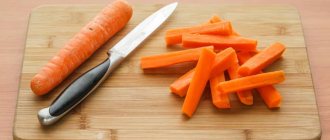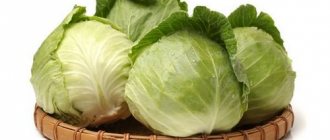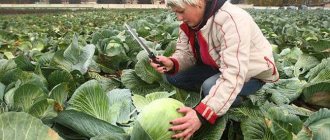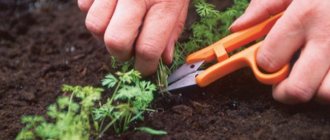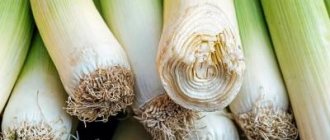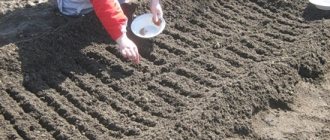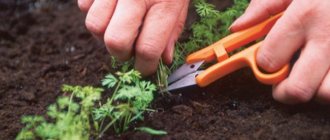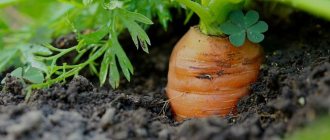What are the benefits of carrots?
According to the Ministry of Health, each person needs to consume 16-18 kilograms of carrots per year for normal functioning of the body. The beneficial properties of your favorite vegetable cannot be counted, but the most basic ones can be highlighted. Carrots contain vitamins C, B, PP, E, K, which are necessary for the normal functioning of the human body. The presence of minerals such as potassium, iodine, zinc, chromium, nickel, cobalt, magnesium, copper and phosphorus makes it a storehouse of health.
Do not forget that the orange vegetable is a source of carotene, which in the human body is converted into vitamin A. Everyone’s favorite carrot is considered to be the No. 1 remedy for restoring vision . This is partly true, because taking the vegetable has a beneficial effect on the retina. It is especially useful for children to chew on it, as it helps strengthen their gums.
Carrot juice in combination with beet juice is recommended to be taken to increase immunity; in case of anemia, it is instilled into the nostrils to cleanse and destroy pathogenic microbes. Boiled carrot puree is included in the menu for colitis. At the same time, you can store carrot puree in an apartment in the freezer, and a refrigerator and an unglazed balcony are suitable for juice. I would also like to note that dried carrots perfectly retain all their beneficial properties.
Storing carrots in beds without digging
In the climatic conditions of the European part of Russia, it is possible to store root crops directly in the beds. With the onset of frost, the carrot tops are trimmed, the beds with carrots are covered with leaves or straw with a 20 cm layer. Plastic film is laid on top. With the onset of winter, the storage area is additionally insulated with snow. In the spring, the ridges are opened and root crops are dug up. This method is relevant if there is not enough space in the basement. Part of the harvest can be left for spring, when digging up carrots will not be difficult.
Features of storage in the basement or subfloor of a wooden private house
Like beets, carrots are the most shelf-stable vegetable . If the storage conditions are met, it “survives” well until the next harvest and does not lose its nutritional properties.
Cellar storage has been and remains the most favorite way for winter storage of vegetables among villagers. And there are several reasons for this: most often the cellar is located directly under the house and there is no need to go to another room for vegetables; no need to worry about the temperature of the subfloor. Storage without a cellar causes much more difficulties.
The storage method is quite simple:
- Soil or sand is poured onto the subfloor.
- Carrots are placed on top.
- If desired, she covers herself with shopping bags.
IMPORTANT! If you are going to store carrots in the underground of a private house, be sure to make sure that it does not flood in the spring, otherwise you risk being left without supplies.
The advantages of storing in a cellar or underground include ease of arrangement of boxes with supplies, a sufficient level of humidity and a longer shelf life compared to an apartment. The only downside is that you have to go to a separate room to get supplies, which is inconvenient in the cold winter.
Read more about storing carrots in a warm cellar or basement here.
Storage methods
Basement and cellar
The ideal place to store carrots is a basement or cellar. In such rooms, optimal temperature and humidity are maintained, which allows you to preserve vegetables until the next harvest. With proper storage, you can enjoy tasty and juicy fruits rich in vitamins and minerals all year round.
Before storing carrots, prepare the room: remove all last year's preparations, sweep well, ventilate and dry the cellar. If necessary, insulate it and waterproof it.
Take care of air ventilation, which should be of medium intensity. If there is an excess of air, the carrots will begin to sprout, and if there is not enough air, they will wither.
A simple and good method is wooden boxes with a lid . To create the blank, prepare containers. The boxes must be absolutely dry and tight. Place root vegetables in prepared containers in several rows, but not more than 20 kg. Close the box with a lid and place it in the cellar at a distance of 10-15 cm from the wall - this will protect the fruits from dampness and accumulated condensation. If possible, place containers on small stands. This method allows you to compactly place a large amount of product even in limited space. The carrots will remain fresh and will not rot, sprout or wither.
The optimal container for storage is wooden boxes. They are convenient and ergonomic to use, and also contribute to the long-term preservation of carrots
To store carrots, you can use sawdust from coniferous trees . Place the root vegetables in a box, layering them with shredded wood. Sawdust releases phenolic substances that protect the crop from diseases and rotting.
If after harvesting onions for the winter there are husks , use them to store carrots. Place the raw materials in bags (boxes) and place the root vegetables there. The husk will absorb excess moisture, protecting vegetables from rotting and sprouting. In addition, the released phytoncides will prevent the proliferation of bacteria and minimize the risk of developing diseases. Place the prepared container on a small hill in the basement or cellar.
Another way to store vegetables in the cellar is to mix chalk and cleaned wet sand . Pour the mixture into the box, place the carrots with the thick end up, and add another layer on top. The advantages of this method: chalk prevents the growth of bacteria, and wet sand preserves the freshness and taste of vegetables for a long time.
You can also use sand when placing carrots in a wooden box. Sprinkle each row well and cover the root vegetables with a layer of wet sand.
An interesting way to store carrots in the form of a pyramid . The sequence of creating a blank is quite simple. Place a thick layer of sand on the bottom of a drawer or shelf. It is important that it is barely damp, but not wet. Place a row of carrots and cover with the next layer of sand. Then lay the fruits again, but in a checkerboard pattern in relation to the first row. Repeat the steps several times, but make sure that the height of the pyramid does not exceed 1 m.
The river sand that will be used for storing carrots must first be sieved and calcined to destroy pathogenic microorganisms.
You can store carrots in a chalk solution :
- Mix chalk with water until you obtain a homogeneous mixture, the consistency of liquid sour cream.
- Soak each root vegetable in the solution and dry well.
- Place the carrots in wooden boxes or simply place them at the bottom of the basement.
An unusual way to store carrots is in a clay solution . The clay shell will protect the carrots from spoilage and rotting. Before storing root vegetables, dip each vegetable in a clay solution and dry. The clay should completely cover the carrots. Once completely dry, place the fruits in a basket or box and place them in a cool, damp place.
A clay solution will help extend the shelf life of carrots. Soak the entire crop in it, and then dry each carrot separately until the clay completely hardens.
Clay mortar can also be used for pouring. To do this, fill 1/2 a bucket of clay with water and leave for a day. Then mix everything well and add a little more liquid. The finished clay should have a consistency similar to liquid sour cream.
After preparing the mixture, prepare the container: cover the bottom of the box or bucket with plastic wrap. Then place a layer of carrots so that the roots do not touch each other. Fill everything with clay and let it dry slightly, and then start laying out a new layer. Repeat until the entire container is filled.
For those who don’t want to bother with boxes and sand, another common method for storing carrots is suitable - in plastic bags . Place the root vegetables in plastic bags and place them at the bottom of the cellar. Make such packages small so that they hold no more than 2-2.5 kg of root vegetables each. Then, with regular checking, you will be able to promptly remove the package in which the carrots have begun to deteriorate, and in the remaining packages the product will remain intact.
Be sure to make several holes in the bags that will serve for ventilation and condensation removal. In this form, the carrots do not dry out or wither. The shelf life of such products cannot exceed 4 months.
You can store carrots in plastic bags in the cellar, but be prepared for the fact that such a crop will not last long
Fridge
If you don’t have a cellar or basement, you can store carrots at home in the refrigerator. To do this, place the dried fruits in plastic bags and place them in a vegetable drawer. The shelf life of carrots in this form is quite short - no longer than 2 months.
You can store carrots in the refrigerator. Use the vegetable compartment (and remember that after 1.5-2 months it will start to spoil)
Freezer
You can store carrots in the freezer for 12-14 months. For freezing, choose juicy and firm fruits. Dry and limp ones are not suitable for this purpose.
You can freeze carrots whole . Wash the vegetables well, cut off the tops and peel off the outer skin. Place the products in freezer bags and place them in the freezer.
You can also pre -grind on a grater, in a food processor, and cut them into cubes or strips. Place the prepared raw materials in small containers, zip-lock bags or regular plastic bags. (This storage option will save time during cooking.)
You can store carrots in the freezer in a ziplock bag, plastic container, or vacuum sealer.
Drying carrots
Carrots that are considered unsuitable for fresh storage (damaged, having an “irregular” shape, small, etc.) can be dried. To do this you need:
- rinse the root vegetables, peel them, remove blemishes;
- Blanch the carrots in boiling water for 10-15 minutes;
- grind according to future uses. You can cut the root vegetables into circles or cubes, grate them on a coarse grater or use a shredder.
The processing method is chosen depending on the capabilities and desires of a particular housewife. Carrots can be easily dried in the oven , microwave or electric dryer .
Air-solar drying, which our grandmothers often used, requires much more effort and takes quite a long time (usually about 2 weeks). But in this case the product is of very high quality. Carrots dried “naturally” can not only be included in a wide variety of dishes. It fully preserves the beneficial properties of fresh vegetables and is used to brew healing tea, which has an extremely beneficial effect on the human body.
Dried carrots are stored in any container (glass or tin jars, fabric bags, etc.) that well protects the contents from moisture and the penetration of household pests. In this form, the product does not lose its consumer properties for 1 year
In an apartment, you can store root vegetables on the balcony, in the underground or in the pantry. The main thing is that the temperature and humidity conditions meet the requirements.
Which variety is better to last until spring?
All carrot varieties are suitable for long-term storage. We list a few of the most resistant varieties:
Shantane is a mid-season variety with high yield. It has a pleasant aroma and sweet pulp. Can be stored for up to 10 months.
- Moscow winter - just like Chantane, is a mid-season variety with high yield. The variety is very popular among summer residents, farmers and villagers.
- Nantes is an early ripening variety, in no way inferior in properties to the species described above.
All these varieties have proven themselves well, received recognition from people and successfully entered the top ten leaders in the Russian market.
What is the best way to store carrots in the cellar in winter?
An important component of the future safety of the crop is its proper preparation for wintering. It begins with the competent selection of varieties for cultivation. The most suitable for long-term winter storage will be late varieties with large conical-shaped fruits.
The varieties best suited for winter storage are those that do not lose their pleasant taste over six months:
- Queen of Autumn.
- Carlena.
- Moscow winter.
- Flaccoro.
- Vitamin.
- Dolyanka.
- Samson.
- Shantanay.
Fleshy, fully ripened root vegetables are inspected, paying attention to each one. Those affected by rot or otherwise damaged are discarded immediately. Before drying, each carrot is carefully trimmed with large scissors to remove the tops. Or cut the greens with a sharp knife, leaving pieces of stems no more than 2-3 mm.
Having decided on the storage method, it becomes clear whether the carrots are worth washing. When putting it in the basement, this is usually not required, but some other methods involve complete cleansing. When there is no need to wash, the root vegetables are thoroughly shaken off any adhering lumps of soil and laid to dry.
Many experienced vegetable growers admit that unwashed carrots are stored better and for a longer period. Then you don’t need to worry about its condition in the cellar.
Video:
Required mode
If you decide to store carrots in the basement, then first of all these requirements must be met :
- air humidity 85-95%;
- the air temperature should not exceed +4 degrees and be below 0;
- availability of ventilation.
Be sure to check the basement for cracks, holes, and openings. After all, rodents who are not averse to eating vegetables can easily enter from them, because, as you know, it is difficult for them to find food in winter. If these conditions are met, you can easily preserve root crops until the summer.
Choosing a carrot variety for planting
Whether the harvest will be preserved without loss depends on the variety chosen for winter storage, compliance with harvesting deadlines and storage conditions. The best keeping quality results are demonstrated by late-ripening, or “winter”, carrots:
- 'Moscow winter';
- 'Geranda';
- 'Losinoostrovskaya-13';
- 'Valeria';
- 'Nantes 4';
- 'Cardinal',
- 'Chantaney';
- 'Grossa'.
How to properly prepare for winter storage of root vegetables?
Preparation for storage is a very important stage that should never be skipped.
Preparing the premises
First of all, before bringing in the crop, it is recommended to treat the cellar from microbes, wipe it with anti-mold and check all possible places of rodent entry.
Digging and drying
You need to take care of storing carrots at the time of harvest . If possible, try to dig up carrots in dry weather to collect them together with the soil and reduce drying time.
It is necessary to pay special attention to the digging process itself. Try not to damage or injure root vegetables, as even a minor cut will become a source of rot and will have a bad effect on shelf life. But even before this, there is an important point - for planting, choose long-lasting varieties. In the central part of our country, harvesting of the beauty begins in mid-September.
The vegetable is not afraid of frost, and harvesting can last for a month. Drying vegetables varies from several hours to two days, depending on the weather in which the fruits were harvested. It will be even better if pieces of soil remain on the carrots. This will protect the fruits from drying out.
It is recommended to cut off the tops and leave only a couple of millimeters , as if you leave more, rot may develop there.
TIP: It is better to separate undamaged fruits from those that still have cuts.
Deformed vegetables must be consumed first, as written above; they are not suitable for long-term storage. The most common place for storage among Russians is the cellar.
How to prepare a cellar
The thin skin of the orange root vegetable poses a particular problem. Penetrating through it with ease, harmful bacteria and fungi can destroy a good half, or even the entire crop. To prevent this from happening, the future storage facility must be cleared of them by disinfection.
Disinfection of the premises must be carried out in a timely manner. Usually this is done in the summer. Or at least a month and a half before placing the harvest of vegetables and supplies of homemade country supplies there. Ready-made disinfectants are purchased at hardware stores.
But you can prepare compositions with your own hands based on:
- Chlorine solution.
- Potassium permanganate.
- Copper sulfate.
To prevent mold from growing and fungus from rampant, the walls are whitewashed with freshly slaked lime. After completing preventive treatment and disinfection, the room is left open for ventilation. The storage facility can be considered ready to accept the carrot harvest after checking the ventilation.
Other Required Conditions
The antibacterial safety of the storage facility, unfortunately, does not yet guarantee 100% safety of root crops. In addition to the absence of pathogenic microflora, the vegetable will require stability of temperature and humidity. You can thoroughly dry and prepare the root vegetables.
But everything will be in vain if they lie in a room that is too warm and wet. Stability of temperature indicators for carrots means fairly cool conditions. Ideal preservation of the carrot crop is ensured when the thermometer does not rise above + 2 and does not fall below zero.
Basement moisture is too dependent on the groundwater level of the soil. In areas with a high occurrence of it, the storage may be too damp. Carrots do not tolerate humidity levels above 97 percent. In such conditions, it quickly rots.
Houses built of wood also do not have the best conditions. If the underground is insulated, vegetables can freeze there. And if there is no thermal insulation, the space under the floor gets too warm from the heat of the rooms. Thus, the carrots will become dehydrated and wrinkled ahead of time.
Tips on the topic
Only healthy and clean carrots with intact skin are suitable for putting into bags. Cut root vegetables can be immediately chopped and frozen in vacuum packaging. Use later for soups and stews.
During storage, you need to monitor the presence of condensation inside the container . If perspiration has collected on the walls of the bag, it is untied or additional holes are made.
It is recommended to choose bags with a capacity of 2-3 kg. Small quantities of vegetables are easier to control.
Possible problems
The appearance of rot from excess moisture. This can be prevented if, when laying carrots, dip both ends in ash. Also, next to an open bag filled with carrots, you can put something that absorbs moisture - lime, newspapers, moss.
- You won't be able to sort through the contents of a large bag to find spoiled carrots. To solve this problem, do not initially put root vegetables in overly large bags. It would be better if they were transparent.
We have given you simple instructions to try out such a new and modern storage method as storing in plastic bags, including vacuum bags. In order to enjoy your own grown, harvested and stored carrots in winter, you must follow these rules. After all, your own carrots cannot be compared with store-bought ones . Keep this healthy and tasty vegetable healthy.
If you find an error, please select a piece of text and press Ctrl+Enter.
Preparation
Preparing carrots for storage should begin in the spring, when choosing seeds for planting. About a month before harvest, you need to start processing the premises . When the cellar is ready, you can collect vegetables, which also require some processing.
Read more about preparing carrots here.
Variety selection
Late-ripening and mid-ripening varieties that are harvested in the second half of autumn are suitable for storage. Such root vegetables can remain fresh for 7-10 months.
You need to choose the following seeds for planting:
Queen of Autumn;
- Flaccoro;
- Dolyanka;
- Samson;
- Chance;
- Nantes;
- Vitamin;
- Moscow winter, etc.
You cannot mix different varieties with each other. They must be stored separately. First of all, mid-ripening carrots are used, and then late-ripening carrots. The best varieties of carrots for storage are described in this article.
How to properly prepare vegetables?
If you put a crop that has not undergone preliminary preparation into the cellar, it will quickly deteriorate. In order for carrots to remain fresh as long as possible, a number of conditions must be met:
- You need to start digging carrots in dry, sunny weather. When removing root crops from the ground, act carefully, trying not to damage them with a shovel.
- The dug carrots are laid out on the bed for initial drying. After 2 hours, carefully shake off the remaining soil, but there is no need to be too zealous.
- The tops are cut off almost to the growth point, leaving a shoot up to 2 mm long. Use a sharp knife to remove greens.
- Place vegetables for temporary storage in a warm room, such as a pantry. After 5-7 days, you can assess their condition and sort out rotten and spoiled fruits.
- After preparation is completed, the vegetables can be lowered into the basement.
Violation of the integrity of the fetus is an entry point for infection. Even one damaged carrot can cause damage to most of the crop.
Room
Proper preparation of the cellar is the key to successful storage of carrots. Action plan:
Ventilate the room. To do this, the cellar is left open for 7-14 days. There should be no foreign odors in it.
- Provide access to fresh air. This is only possible if there is well-functioning ventilation.
- Disinfect all surfaces. The walls must be treated with a 2% bleach solution, which prevents the proliferation of microorganisms.
- Whitewash the walls. Whitewashing begins 14 days after disinfection. For 1 sq. m. it takes about 0.5 liters of solution.
- Treat storage containers. There should be no signs of mold growth. It is recommended to place the boxes in the sun to ensure additional drying and disinfection.
Preparatory activities take not a single day. You need to start selling them in advance, about a month before putting the harvest into the cellar.
Varieties suitable for long-term storage
To preserve the harvest longer, mid-season and late varieties are planted. Important characteristics of culture:
- growing season - from 115 days;
- lack of predisposition to major cultural diseases;
- low risk of cracking;
- Suitable for any climate.
Nantes 4
It takes about 120 days for root crops about 20 cm long to ripen. If you plant the seeds of this variety in May, then the harvest is already harvested in September. If there is not enough time, carrots are left in the ground until October. Vegetables are stored until February. From 1 m2 they collect 5-6 kg.
Samson
Mid-season variety, unpretentious in care, suitable for any soil and climate. Ripens 110–120 days from the first shoots, stored until May of next year. The average length of carrots is more than 20 cm, weight - 125–150 g. Productivity is high - up to 762 c/ha.
Chance
Mid-season variety, 110 days after planting produces juicy root crops of marketable appearance. Productivity - 5 kg/m2. When grown, it requires sufficient light, loose soil with a high percentage of humus. Vegetables are stored until March.
Queen of Autumn
Late variety, ripens 130 days after sowing. With proper care and fertilization, the root crops reach 25 cm in length, 85–230 g. Such carrots can be stored until the next harvest without loss of taste and marketable qualities. Productivity - 265–576 c/ha.
Dolyanka
Late Dolyanka preserves the marketable appearance and taste of carrots until spring. Vegetables ripen 140–150 days after sowing. Root crops grow 15–22 cm long, weighing 95–145 g. The marketable yield of the variety is 243–372 c/ha.
Karotan
Late-ripening Carotan grows best in well-lit, loose soil. The harvest is stored until the next season, the vegetables grow at least 25 cm long. The time from the first shoots to maturity is 135–150 days. Productivity - up to 405 c/ha.
Vita Longa
The variety is resistant to black and gray rot and has high transportability. It takes up to 160 days for carrots to fully ripen, and they are stored until the new season. Root crops grow up to 30 cm in length, weighing up to 130 g. Productivity is 200–490 c/ha.
Together with beets in one container
The temperature and humidity requirements for carrots and beets are similar.
However, different densities of the skin of root crops can cause damage to the beets during storage. Arguments for shared storage:
- you can put vegetables in one container in the ratio as needed for further use;
- During storage, beets absorb excess moisture formed in the bag, and carrots lie better.
The disadvantage of storing in one container is that harder carrots, with a sharp tip, can scratch the skin of the beets. Through micro wounds, an infection penetrates into the vegetable and it spoils.
To avoid this, the root vegetables are not mixed together in the bag: carrots are placed in layers on the bottom, and beets are placed on top of them.
Pros and cons
According to reviews from experienced gardeners, storing root vegetables in bags has undoubted advantages:
- Convenient to use portioned volume of vegetables in a bag.
- Carrots are placed clean and do not get dirty during storage.
- In transparent containers it is easy to see the beginning of spoilage of vegetables.
- When rot forms in one bag, the disease does not spread to other vegetables.
The main disadvantage of “bagged” storage is the lack of ventilation inside the closed bag, which leads to exceeding the permissible humidity and storage temperature.
Some vegetable growers solve this problem by making ventilation holes in the walls of the bag.
Problems and solutions
Problems that you may encounter when storing carrots and how to solve them:
- Withering. It is necessary to increase the humidity level in the cellar. To do this, you need to take care of proper ventilation. A temporary measure can be spraying water with a spray bottle, or placing buckets of liquid.
- The appearance of mold on the crop . This happens when there is excess moisture. You can cope with the problem if you put a bag of quicklime in the cellar.
- Rotting. Why do carrots rot? Most likely, a diseased vegetable got into the container. In this case, the entire crop must be sorted, damaged roots removed and stored again.

